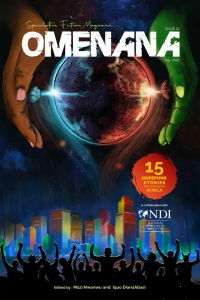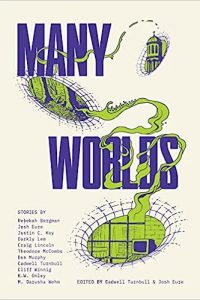Gary K. Wolfe reviews How To Stop Time by Matt Haig
 How To Stop Time, Matt Haig (Canongate 978-1-782-11861-9, £12.99, 33699, hc) July 2017. (Viking 978-0-525-52287-4, $26.00, 329pp, hc) February 2018.
How To Stop Time, Matt Haig (Canongate 978-1-782-11861-9, £12.99, 33699, hc) July 2017. (Viking 978-0-525-52287-4, $26.00, 329pp, hc) February 2018.
The notion that living among us there might be immortals – or at least folks with very long lifespans – is itself an idea that just hangs on decade after decade, not only in SF/F circles but in popular potboilers like Viereck & Eldridge’s hoary My First Two Thousand Years (1928) and in philosophical fictions like Borges’s ‘‘The Immortal’’ (1947). Every once in a while the idea is reimagined with such innocence and clarity that it seems fresh, if not exactly new, and such is the case with Matt Haig’s How to Stop Time, which became a bestseller in the UK late last year and now is apparently barreling toward movie production with Benedict Cumberbatch in the role of Tom Hazard, Haig’s 430-something-year old narrator (born in 1581 in France, but who moved as a child to England). Haig has written for children as well as adults, and this experience seems to serve him well in a narrative that, despite hopscotching four centuries of world history and featuring occasional celebrity walk-ons by the likes of Shakespeare and F. Scott Fitzgerald, manages to maintain focus on a handful of family relationships and an undying romance (I actually mistyped ‘‘undrying,’’ but that would do as well, at least for bits of the story). The central conceit is that, due to a hand-wavy genetic defect, Hazard ages only about one year for every 15, as do a small number of other individuals worldwide (he meets one who must be over 1,000). As the story opens in contemporary London, Tom appears to be in his early forties.
Despite frequent side trips to various historical periods and places (Paris 1928, Tahiti 1767, Arizona 1926, etc.), the main action plays out between contemporary London, where Tom has taken a job as a history teacher, and the London of the late 16th and early 17th centuries, where he met the love of his life, Rose, and fathered a girl named Marion. But as Tom’s failure to visibly age leads to suspicions of witchcraft (his mother was killed as a witch for this very reason), he realizes he’ll have to leave his family for their own protection, which he does in 1617. While Rose predictably ages and dies, Marion has inherited the longevity gene, and the central plot thread of the novel is Tom’s quest to find the long-lost daughter he abandoned four centuries earlier. Meanwhile, he finds himself attracted to a French teacher at his school, and continues to receive sometimes cryptic assignments from a shadowy character named Hendrich, who is apparently the chief administrator of the Albatross Society, a secret worldwide network to protect and assist the long-lived, or ‘‘albas’’ as they call themselves. (The name comes from the old belief that albatrosses experience unusual longevity.)
Much of the appeal of How to Stop Time, apart from Tom’s romantic, melancholic voice and the appealing if mostly uncomplicated characters, is that it makes few of the demands of either historical fiction or SF. While Rose apparently dies of the plague and mention is frequently made of the awful stench of Elizabethan London and the short life expectancy, there is little sense of the sheer weight and graininess of history, and historical figures like Shakespeare and Fitzgerald emerge pretty much Hollywood-ready. Tom’s detailed memory of events from centuries ago is way better than mine is of events from twenty years ago, but there’s little discussion of how he manages to keep everything in focus over such a long span (an issue that is raised in Brian Stableford’s underrated emortality series). And while the albas understandably try to protect themselves by avoiding any contact with governments or the medical establishment, Tom’s one reported visit to a doctor, in 1860, is with Jonathan Hutchinson, the physician who first described progeria – and who promptly tries to send Tom off to Bedlam. Haig’s decision to describe Tom’s condition as somehow the opposite of progeria is wobbly at best, though, and seems to make facile use of a serious genetic disorder. Still, How To Stop Time is undeniably ingratiating, and Haig even manages to concoct a bit of a thriller plot toward the end, in order to provide a degree of closure to a situation that would seem to be defined by its very lack of closure. The movie should be a hoot.
Gary K. Wolfe is Emeritus Professor of Humanities at Roosevelt University and a reviewer for Locus magazine since 1991. His reviews have been collected in Soundings (BSFA Award 2006; Hugo nominee), Bearings (Hugo nominee 2011), and Sightings (2011), and his Evaporating Genres: Essays on Fantastic Literature (Wesleyan) received the Locus Award in 2012. Earlier books include The Known and the Unknown: The Iconography of Science Fiction (Eaton Award, 1981), Harlan Ellison: The Edge of Forever (with Ellen Weil, 2002), and David Lindsay (1982). For the Library of America, he edited American Science Fiction: Nine Classic Novels of the 1950s in 2012, with a similar set for the 1960s forthcoming. He has received the Pilgrim Award from the Science Fiction Research Association, the Distinguished Scholarship Award from the International Association for the Fantastic in the Arts, and a Special World Fantasy Award for criticism. His 24-lecture series How Great Science Fiction Works appeared from The Great Courses in 2016. He has received six Hugo nominations, two for his reviews collections and four for The Coode Street Podcast, which he has co-hosted with Jonathan Strahan for more than 300 episodes. He lives in Chicago.
This review and more like it in the June 2018 issue of Locus.
 While you are here, please take a moment to support Locus with a one-time or recurring donation. We rely on reader donations to keep the magazine and site going, and would like to keep the site paywall free, but WE NEED YOUR FINANCIAL SUPPORT to continue quality coverage of the science fiction and fantasy field.
While you are here, please take a moment to support Locus with a one-time or recurring donation. We rely on reader donations to keep the magazine and site going, and would like to keep the site paywall free, but WE NEED YOUR FINANCIAL SUPPORT to continue quality coverage of the science fiction and fantasy field.








